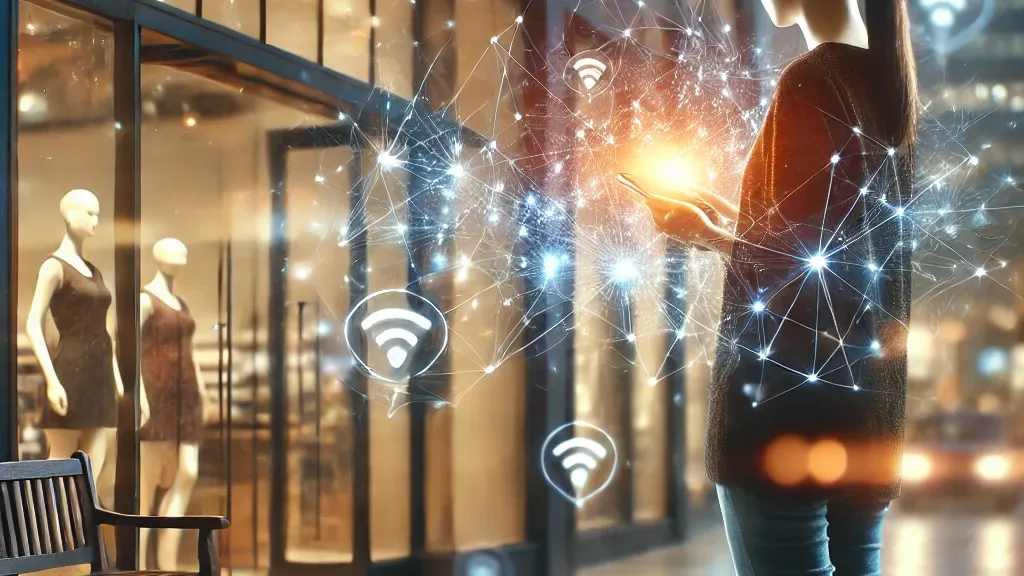Living with low vision can present challenges in daily life, but with the right tools and resources, individuals with visual impairments can regain independence and continue to perform their daily activities with confidence. Low vision aids are specialized devices that can help individuals with visual impairments make the most of their remaining vision and improve their quality of life. In this blog, we will explore the different types of low vision aids available, how they can be used, and the benefits they offer to individuals with visual impairments.
Table of Contents
Understanding Low Vision and Its Impact
Low vision is a condition characterized by significant visual impairment that cannot be corrected with regular eyeglasses, contact lenses, medication, or surgery. It can result from various eye conditions, such as age-related macular degeneration, glaucoma, diabetic retinopathy, cataracts, and other vision-related diseases or injuries. Low vision can significantly impact an individual’s ability to perform everyday tasks, such as reading, writing, cooking, navigating, and recognizing faces, which can greatly affect their overall independence and quality of life.
Types of Low Vision Aids
Low vision aids are designed to assist individuals with visual impairments in utilizing their remaining vision effectively. These aids can be categorized into different types based on their purpose and functionality. Here are some common types of low vision aids:
Magnifiers
Magnifiers are devices that help individuals with low vision to enlarge printed materials, such as books, newspapers, and labels, making them easier to read. Magnifiers come in various forms, including handheld magnifiers, magnifying glasses with light, stand magnifiers, pocket magnifiers, and electronic magnifiers. Electronic magnifiers, also known as video magnifiers or CCTV (Closed Circuit Television) systems, use a camera and a screen to display enlarged images, providing greater flexibility and versatility in magnification levels, contrast settings, and viewing options.
Telescopes
Telescopes are low vision aids that can be used for distance viewing. They are helpful for tasks such as watching TV, recognizing faces, or reading signs from a distance. Telescopes can be monocular, which are used with one eye, or binocular, which are used with both eyes. They come in various designs, such as handheld telescopes, spectacle-mounted telescopes, and telescopic lenses that can be attached to regular eyeglasses.
Reading Aids
Reading aids are specialized low vision aids that assist individuals with visual impairments in reading printed materials. They can include devices such as reading stands, book holders, reading lamps, and reading guides that help individuals maintain proper reading posture, reduce glare, and follow lines of text accurately.
Contrast Enhancers
Contrast enhancers are low vision aids that enhance the contrast between text or images and their background, making them easier to see for individuals with low vision. These aids can include devices such as bold line paper, high-contrast markers, bold markers, and tactile markers that help individuals distinguish between different elements on printed materials or everyday objects.
Lighting Aids
Lighting plays a crucial role in enhancing visibility for individuals with low vision. Lighting aids, such as task lights, portable lamps, and adjustable lighting fixtures, can provide directed and adjustable illumination to optimize visual performance, reduce glare, and enhance contrast for reading, writing, and other visual tasks.
Electronic Devices
In today’s digital age, there are numerous electronic devices and applications that can assist individuals with low vision. These can include screen magnification software for computers and smartphones, text-to-speech software, screen readers, and voice-activated virtual assistants
Benefits of Low Vision Aids
Low vision aids can offer a range of benefits to individuals with visual impairments, helping them regain independence and improve their quality of life. Some of the key benefits of low vision aids include:
Enhanced Reading and Writing Abilities
Magnifiers, telescopes, reading aids, and contrast enhancers can all help individuals with low vision read and write more comfortably and efficiently. Enlarged text, enhanced contrast, and proper lighting can make reading materials, writing notes, and completing everyday tasks that require reading or writing much easier.
Increased Mobility and Navigation
Low vision aids such as telescopes and electronic devices can improve individuals’ ability to navigate their surroundings and recognize objects or signs from a distance, enhancing their mobility and independence. This can be particularly useful when navigating outdoor environments, public spaces, or unfamiliar places.
Improved Visual Performance
Lighting aids and contrast enhancers can optimize visual performance by reducing glare, enhancing contrast, and providing directed illumination, making it easier for individuals with low vision to see and distinguish between different objects or text. This can significantly enhance their ability to perform tasks that require visual acuity, such as reading, writing, or recognizing faces.
Increased Social Engagement
Low vision aids can also promote social engagement by allowing individuals with visual impairments to participate in activities such as reading books, newspapers, or social media, using electronic devices, or recognizing faces of loved ones or acquaintances. This can help individuals with low vision maintain social connections, stay informed, and participate in hobbies or interests.
Enhanced Independence and Quality of Life
Perhaps the most significant benefit of low vision aids is the increased independence and improved quality of life they can provide. By empowering individuals with visual impairments to perform daily activities more easily and efficiently, low vision aids can boost their confidence, self-esteem, and overall well-being.
Tips for Choosing and Using Low Vision Aids
Choosing and using low vision aids can require careful consideration and guidance to ensure that individuals get the most appropriate and effective aids for their specific needs. Here are some tips for choosing and using low vision aids:
Consult with a Low Vision Specialist
It’s crucial to consult with a low vision specialist, such as an optometrist or an ophthalmologist, who specializes in low vision and can assess an individual’s visual needs, recommend appropriate aids, and provide guidance on their proper use. A low vision specialist can also provide training on how to use the aids effectively and incorporate them into daily routines.
Try Before You Buy
It’s essential to try out different low vision aids before making a purchase to find the ones that work best for an individual’s needs and preferences. Many low vision aids are available for trial or demonstration at low vision clinics, vision rehabilitation centers, or specialty stores. Trying out different aids can help individuals assess their effectiveness, comfort, and usability before making a decision.
Consider Lifestyle and Needs
When choosing low vision aids, consider an individual’s lifestyle, hobbies, and specific needs. For example, if an individual enjoys reading, a handheld magnifier or an electronic magnifier may be more suitable. If an individual needs to recognize faces or navigate outdoor environments, a telescope or a handheld magnifier may be more beneficial. Understanding an individual’s specific needs and preferences can help in selecting the most appropriate low vision aids.
Proper Lighting
Adequate lighting is crucial for optimizing visual performance. Make sure to use proper lighting aids, such as task lights or adjustable lamps, in combination with low vision aids to enhance visibility and reduce glare. Experiment with different lighting conditions to find the optimal setting that works best.
Regular Eye Exams
Regular eye exams are essential for individuals with low vision to monitor their eye health and update their low vision aids as needed. Vision changes can occur over time, and it’s important to stay proactive in managing one’s visual needs. Regular eye exams can also help individuals with low vision stay informed about new low vision aids or technologies that may be beneficial for them.
Proper Training and Practice
Low vision aids may require some training and practice to use effectively. It’s important to receive proper training from a low vision specialist or a vision rehabilitation professional on how to use low vision aids correctly. Practice using the aids in various settings and situations to build confidence and competence in their use.
Consider Ergonomics
Ergonomics play a crucial role in using low vision aids comfortably and effectively. Consider the design and size of the aids, as well as their weight, grip, and ease of use. Look for aids that are ergonomically designed and fit well in an individual’s hand or on their face to ensure maximum comfort and usability.
Keep Aids Clean and Well-Maintained
Low vision aids, like any other optical devices, require regular cleaning and maintenance to ensure their optimal performance. Follow the manufacturer’s instructions for cleaning and storing the aids, and keep them in a safe and dry place when not in use. Regular maintenance, such as replacing batteries, cleaning lenses, or adjusting settings, may be necessary to keep the aids functioning properly.
Where to Get Low Vision Aids
Low vision aids can be obtained from various sources, depending on an individual’s needs and preferences. Here are some common places where individuals with low vision can find and obtain low vision aids:
Low Vision Specialists
Low vision specialists are eye care professionals who are trained in evaluating and managing visual impairments. They can provide comprehensive low vision assessments and prescribe appropriate low vision aids based on an individual’s visual needs and lifestyle. Low vision specialists can also provide training on how to use low vision aids effectively.
Vision Rehabilitation Centers
Vision rehabilitation centers are specialized facilities that provide comprehensive rehabilitation services to individuals with visual impairments. These centers may have a range of low vision aids available for individuals to try out and choose from. They may also provide training and support in using low vision aids as part of their rehabilitation programs.
Low Vision Store
Many optical stores or optometry practices carry a selection of low vision aids, such as magnifiers, telescopes, and contrast enhancers. These stores may have trained staff who can provide guidance and recommendations on choosing appropriate low vision aids based on an individual’s visual needs and preferences.
Online Retailers
There are numerous online retailers that specialize in low vision aids, offering a wide range of options and accessories. Online shopping can be convenient for individuals who prefer to browse and compare different low vision aids from the comfort of their own homes. However, it’s important to research and choose reputable online retailers to ensure the quality and effectiveness of the low vision aids.
Non-profit Organizations
Some non-profit organizations and advocacy groups for individuals with visual impairments may also offer low vision aids as part of their services or programs. These organizations may have partnerships with manufacturers or suppliers of low vision aids, allowing them to offer discounted or subsidized prices to individuals with low vision.
Consider Your Visual Needs and Lifestyle
The first step in choosing a low vision aid is to consider your visual needs and lifestyle. Think about the specific tasks or activities that you want to perform with the aid of the device. For example, if you need a device for reading, consider the type of materials you want to read, such as books, newspapers, or labels. If you need a device for distance viewing, such as watching TV or seeing signs, consider the appropriate magnification levels or features. Also, think about your lifestyle and daily activities. Do you need a portable device that you can take with you on the go? Do you need a device that can be easily adjusted or customized to your preferences? Considering your visual needs and lifestyle will help you narrow down your options and choose a low vision aid that best fits your requirements.
Consider Cost and Insurance Coverage
Low vision aids can vary in cost depending on the type, brand, and features of the device. It’s important to consider your budget and insurance coverage when researching and selecting low vision aids. Here are some points to keep in mind:
Cost
Low vision aids can range in price from relatively affordable handheld magnifiers to more expensive electronic devices with advanced features. It’s important to determine your budget beforehand and look for options that fall within your price range. Keep in mind that while some low vision aids may have a higher upfront cost, they may offer long-term benefits and durability.
Insurance coverage
Some insurance plans may cover part or all of the cost of low vision aids, especially if they are deemed medically necessary. It’s important to check with your insurance provider to understand your coverage options for low vision aids. You may need to provide documentation from your eye care specialist or low vision specialist to support the medical necessity of the device.
Financial assistance programs
There are also financial assistance programs and resources available for individuals with low vision who may need help with the cost of low vision aids. These programs may be offered by non-profit organizations, government agencies, or charitable foundations. It’s worth exploring these options to determine if you may qualify for any financial assistance.
Considering the cost and insurance coverage of low vision aids can help you make informed decisions about the affordability of different options and ensure that you can obtain the necessary aids within your budget.
Conclusion
Low vision aids can greatly enhance the visual abilities and independence of individuals with low vision. From handheld magnifiers to electronic devices with advanced features, there are a wide variety of options available to suit different visual needs and lifestyles. By considering factors such as the type of low vision aid, seeking professional advice, cost and insurance coverage, and proper care and maintenance, individuals with low vision can make informed decisions and effectively utilize these aids to improve their quality of life.
If you or a loved one have low vision, it’s important to consult with qualified eye care specialists, low vision experts, or occupational therapists to determine the most suitable low vision aids for your needs. They can provide comprehensive evaluations, recommendations, and training on how to best use these aids to optimize your visual abilities and daily activities.
Additionally, considering factors such as cost, insurance coverage, and financial assistance programs can help make low vision aids more accessible and affordable. Proper care and maintenance, including regular cleaning and following manufacturer’s instructions, can ensure the longevity and optimal performance of low vision aids.












